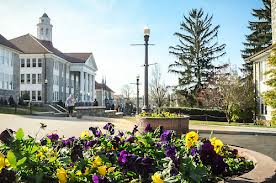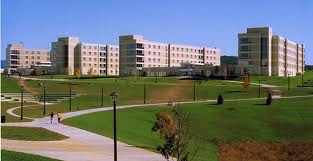The great and important overlap
March 11, 2013 Leave a comment
For every college and university in every town and every city in every part of the country, there is town and gown, yin and yang, give and take, push and pull. JMU in Harrisonburg is no exception.
Since 1908, Harrisonburg and Madison have grown together and sometimes groaned together, side by side. Occasionally, there are spats, but for the most part it has been a mutually beneficial arrangement. A university’s presence in a community, a state, a nation can and should have a positive impact. It should be a catalyst for positive change.
Last night citizens from the community, students and Madison faculty came together for a Citizenship Forum as part of the weeklong celebration of Friday’s inauguration of President Jonathan Alger. They discussed higher education’s responsibility to society to help produce educated, informed and enlightened citizens, who will in turn influence their communities.
In the wise words of panelist Jim Shaeffer, “We’ve got to live with each other at the end of the day.” It is, perhaps, the best reasoning I’ve ever heard for civic and civil engagement, but how do we get there? What is higher education’s responsibility in producing educated, informed and enlightened citizens?
Jim, associate vice president for outreach and engagement at JMU, was joined on the panel by Chaz Evans-Haywood (’96), Clerk of the Circuit Court for Harrisonburg and Rockingham County, and Meg Mulrooney, JMU associate professor of history and associate dean for University Studies. Brian T. Kaylor, JMU asistant professor of political communication, advocacy studies, rhetorical methods and public speaking, moderated the discussion.
Jim has spent 30 years in outreach and engagement. He characterized the intersection of civic involvement, community involvement and education as a Venn diagram whose purposes overlap. Based on the Carnegie model, he says, civic engagement should provide mutual beneficial exchange of ideas and strengths, partnerships and reciprocity. “All of us bring strengths to the table,” he said, “You leverage the strengths of both.”
That’s exactly what happened in Chaz’ office, for example. After he was elected, Chaz was faced with an office full of documents dating back to the 1700s. His predecessors had “saved everything,” he said. Preserving that history has been an important task for his office, and JMU students have played a part. “The students were excited about the technology and how they could use it [to preserve the court’s history].” It was a win/win for the clerk’s office and for the students. Students provided enthusiasm and ideas based on their technical saavy. The opportunity to work in an office setting helped hone students’ critical relationship skills.
When students and community groups intersect both also have responsibilities. Chaz pointed out to the students in attendance that they — as voters in local elections — influence the lives of his children through votes on issues such as local school funding and the allocation of funding.
To make those decisions, Meg Mulrooney said, students — as future citizens — need good judgment. One of higher education’s responsibilities is to prepare students to make these decisions wisely and to apply learned and practiced skills in ethical reasoning. Teaching ethical reasoning across the curriculum is the focus of the Madison Collaborative, a new program that will ensure that every student will graduate equipped with the critical thinking skills to function as thoughtful and positive members of society.
The obligation of higher education to teach ethical reasoning in action and civic responsibility goes even further than teaching, Jim said. “As a public university, we have a moral obligation to share our resources, our expertise with the community.”
“The Madison community must also model community engagement to students,” he also said.
Participants in the event included current students, members of the JMU debate team, faculty members, community members, one toddler (who was the least interested in the event) and even friends of the Algers, the Matsons from Princeton, NJ, who were on campus to celebrate the inauguration of their good friend Jon Alger.
The Citizenship Forum was an evening of engagement in action, one that is repeated in offices, classrooms, clubs and organizations — anywhere that the university and the community overlap.



















Recent Comments